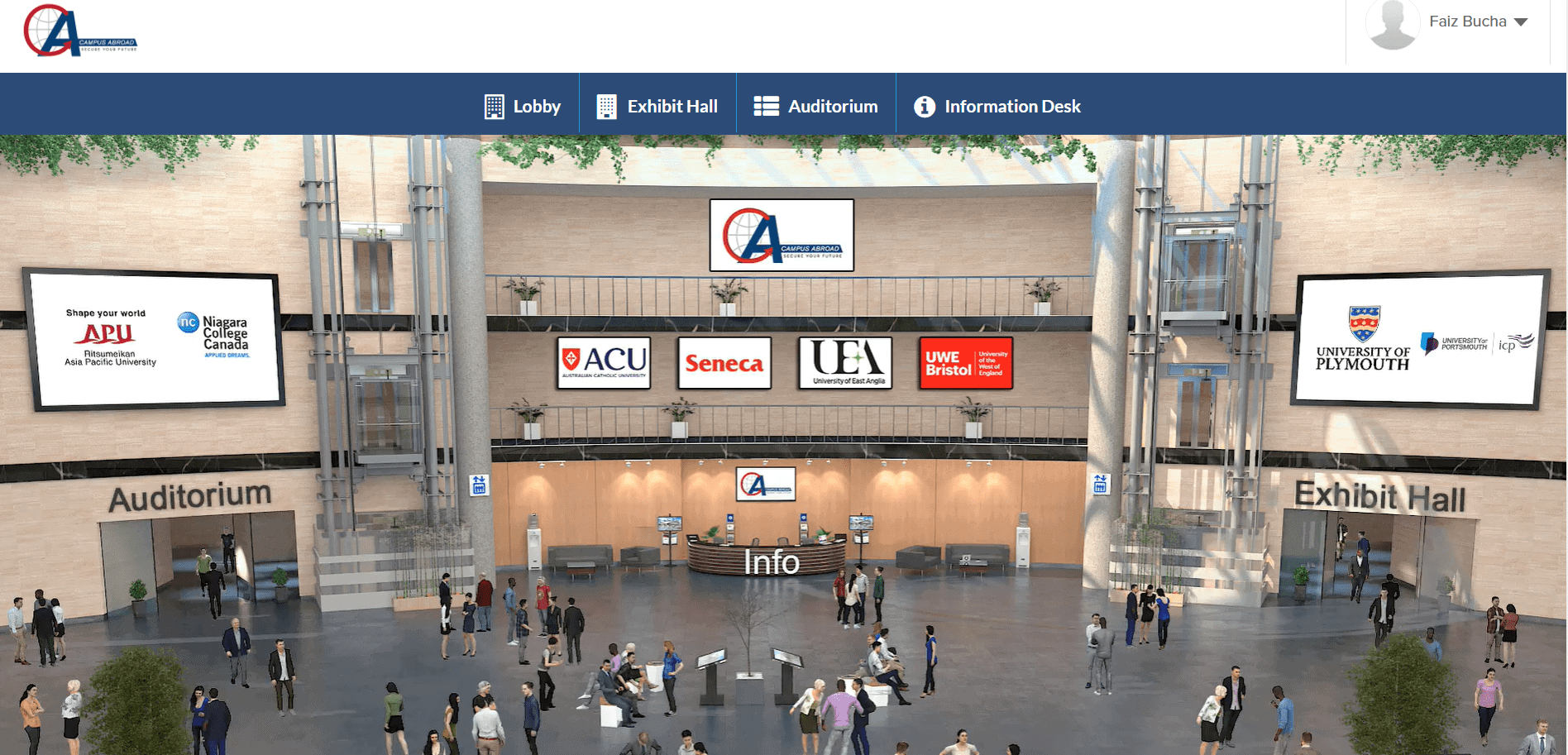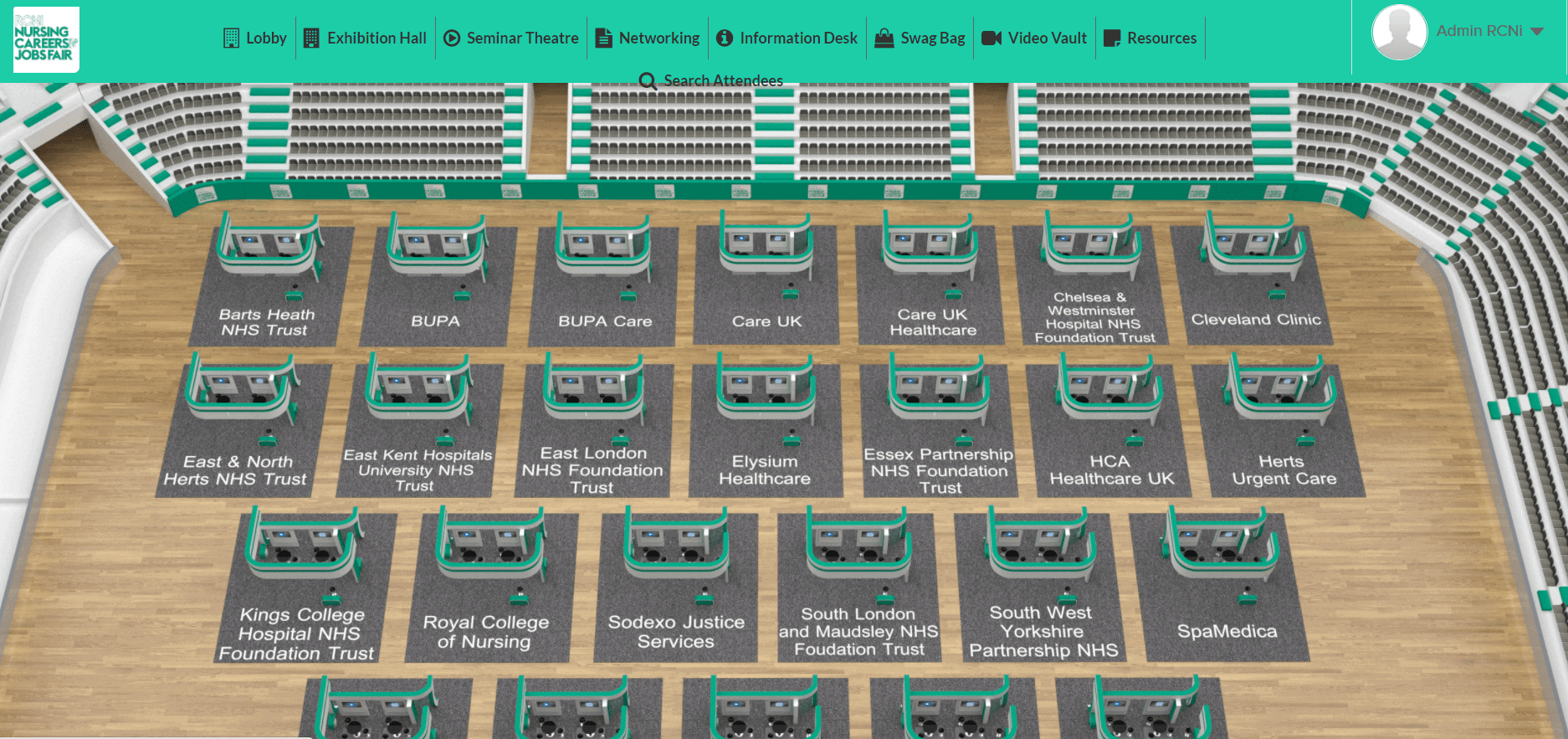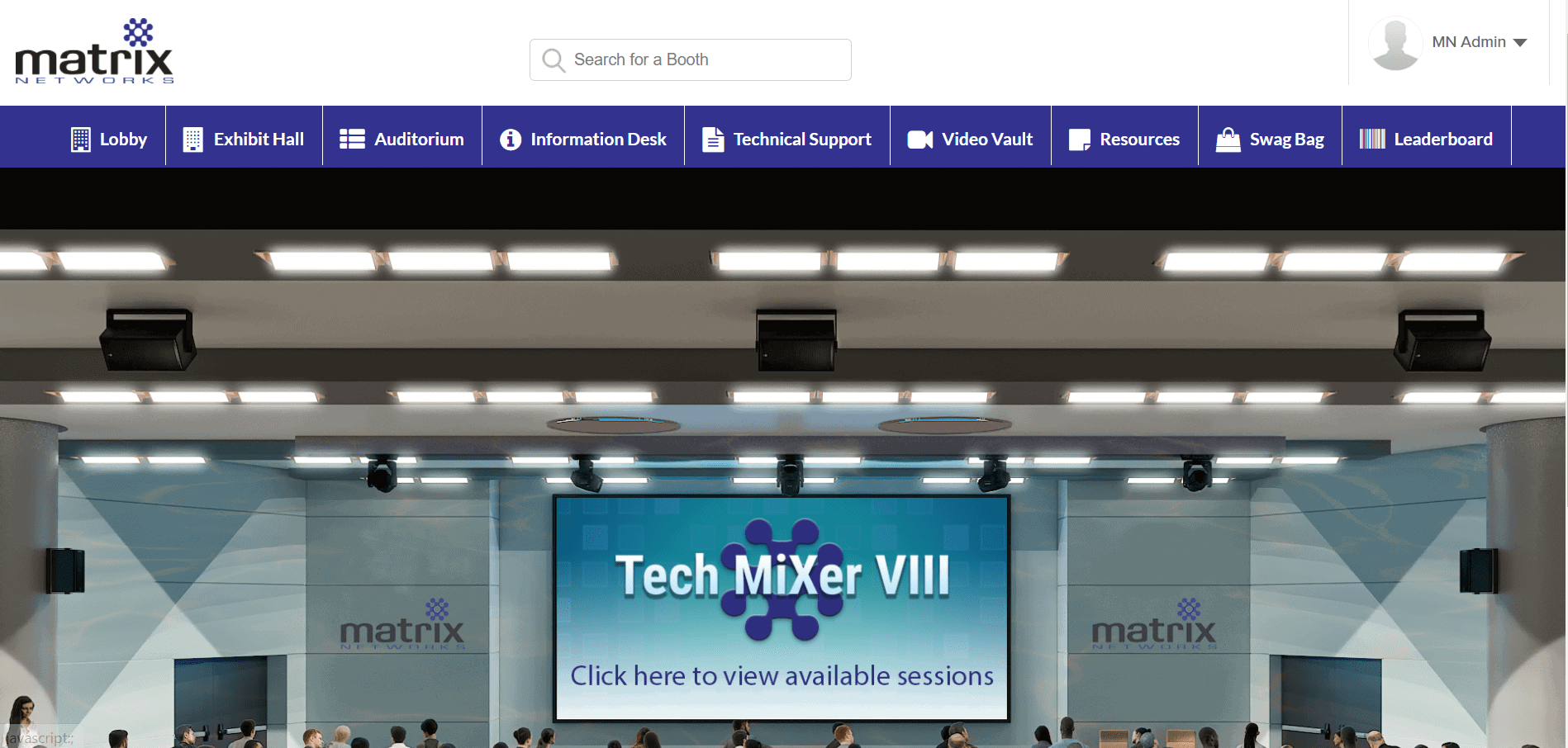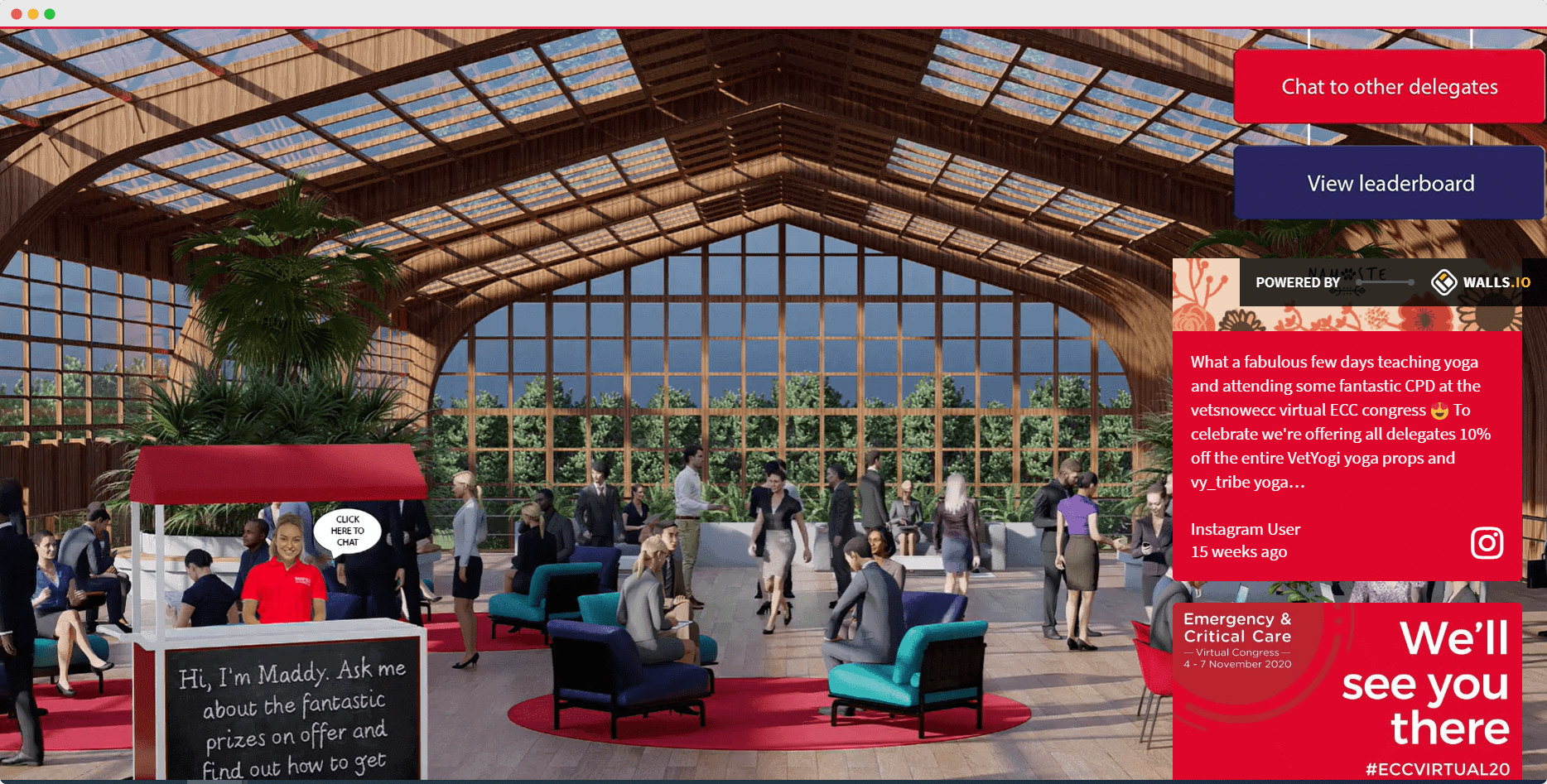Open days are a great way to promote your university, show prospective students your campus and allow them to experience it first hand. Students can get a glimpse of life on campus, and universities can connect with students. In any case, an open day is bound to offer more to your target audience than a prospectus does. A virtual open day is still an open day, just in a ‘virtual venue’.
Virtual events are a huge part of the future. Marketers cannot deny their benefits. They allow you to reach a global audience and help you analyze the event and its success with empirical data. They even eliminate travel requirements and added expenses. For this reason, 71% of marketers expect virtual events to continue beyond 2020.
As people are warming up to the idea of virtual, we are here to help you maximize the benefits you get out of your virtual open day.
Chances are that you are already planning your virtual open days for this year.
But are you struggling with where to start planning?
We know important it is for you to set the right impression, and to connect with your prospective students effectively. This is why we have prepared a planning sheet to get you started and to guide you in creating a strategy for your virtual open day.
Without further ado, let’s go!
Strategy for Virtual Open Day
Define Your Event Plan
Create a plan for your event, starting from the basics. Set objectives, outline goals and target your audiences. Defining a clear plan for your event will help you stay on course, without letting you deviate from your end goals.
Consider the following when you start to define your event plan:
- Goals: what you hope to achieve, setting objectives and key performance indicators (KPIs) to measure the success of your event
- Target audience: define who you are talking to, who are the decision-makers and target groups you want to reach
- Virtual events platform: research virtual event platform providers to see which one suits your needs and can translate your requirements to a virtual event
- Event strategy: identify sponsors, sponsorship packages, ticketing processes, exhibit halls
Pro tip: Before you move on with your planning process, chart out your milestones. This will help you keep track of your goals, tasks and deadlines. As a result, helping you deliver your virtual open day in an allotted time frame.
Hereon, creating your strategy gets easy as you know your goals, target audience and where you are hosting your virtual open day.
The next question however is, where is your target audience landing. The answer is simple. Your landing page.
Design An Attractive Landing Page
This is where all your marketing efforts lead. This is where your target audience comes to for all information regarding your virtual open day. From event dates, schedules, to agenda, everything is displayed right here. Your event landing page should also create excitement — visitors should be itching to attend. Offer sneak peeks into the event and highlight the speakers attending.
Additionally, ensure a registration form is ready to effectively gather consumer data. Create registration forms that are quick to complete and easy on the eyes. Integrate with tools that allow you to collect consumer data. For instance, integrating with customer relationship management (CRM) software could help you collect basic information such as names, numbers and addresses, etc. This information could be valuable in future promotional activities.
With vFairs, setting up your landing page is effortless with constant support from the project team, who ensure the process is seamless from the get-go!
And finally, go live with your landing page!
Pro tip: create trackable event landing pages. This allows you to collect data on which methods of event promotion are working best and which method has the highest ROI.
Now that you have successfully attracted visitors to your event. Let’s talk about how to keep them there. Keeping them engaged, helping them interact with fellow attendees, exhibitors and hosts significantly determine how successful your event is.
Be sure to include the following features that will boost the engagement levels of your event.
Download our Free Open Day Planning Kit
Develop Informative Content
You need content to keep your attendees effectively engaged. Spark their interest with interactive documents and videos. Content offers tangible value to your attendees.
Hence, consider the following when designing your content strategy:
- Welcome video: welcomes attendees, outlines agenda, guides attendees through the event and sets the stage for the rest of the virtual open day
- About us: add basic information about your schools, departments, programs, life in the city, life on campus. Add short videos on success stories of alumni.
- Campus tour: tour video taking students around the campus covering accommodations, cafeteria, sports grounds and auditoriums for a visual representation
- Local area guide: where to buy everyday essentials, local tourist and entertainment spots, bus/train stations, getting to and from campus
- Visa information: visa processes, checklists and timelines

Whether you choose videos or documents, either way, your content should help students make their decision and the otherwise intimidating process effortless. Students should be able to download this material to reference later on.
Engaging Exhibitor Booths
Your exhibitor booths are also a hub of information. Attracting students to the booths and making sure they stay and get the required information is essential. Information booths based on financial aid, visa processes, student body, and career services can be set up to let your students have relevant information on each of these. Clearly laying them out will help your audience easily navigate through. Adding in some of these key features will keep attendees engaged:
- Chat: include a ‘chat’ button, assign chat room attendants who will enable effective communication and add a schedule of students managing the chat rooms
- Speaker notes: answer frequently asked questions (FAQs) from the previous open days
- Downloadable documents and videos: add checklists, instructions, key documents and videos presenting valuable information

Pro tip: Add information booths about various departments, universities, societies and activities that take place in your university. This is a chance to adequately highlight all that your university has to offer.
Speaker Sessions
Hosting speaker sessions that the audience can learn from and relate to can also be a great addition to your virtual open days. Invite successful alumni to talk about their journey in the university and beyond it. Some prominent faculty members or career counselors can talk about choosing careers, a degree program, and even deciding on which courses to take. You can plan for:
- live sessions, where speakers can host a dialogue with their audience
- semi-live sessions, where a pre-recorded video is played but speakers are available via a chat function, or
- pre-recorded presentations and webinars, where the audience can watch the presentation on their own time.

Don’t forget to create session schedules, so your attendees know when each session is taking place. Set the sessions up within your virtual event platform and add reminders within the platform for the speaker sessions, so attendees can be pinged whenever a particular session is about to begin.
Networking
Prospective students and their parents are coming to the virtual open day to know more about the university, the faculty, and life in general there. So make sure they are able to get that from the horse’s mouth. Create a networking platform where they can talk to current students, faculty members and department heads to learn more about your university.
Pro tip: to engage with some target students, book 1:1 meetings or group chat sessions to talk to them about their requirements, and highlight what your university has to offer in return. These students coming in from high school can be selected based on their GPAs, extracurricular activities, or program preferences.

Create An Accessible Virtual Space
Your virtual open day platform should be a welcoming space for all. Enabling people of disability and different languages to comfortably participate can go a long way for you. Thus, make sure your event caters to the blind and deaf community by making your event accessible. From navigation to color contrast, large font size to page narrations and captioned webinars, these small additions can allow everyone to feel welcome.
Moreover, people may attend your virtual open day from another country and feel comfortable with different languages. Enable these people to participate by integrating features such as KUDO. This feature allows you to conduct multilingual webinars and Q&A sessions. Kudo will also help you cater to the deaf community as it allows translations in sign language.
And finally, how can you make all this effort without creating some noise?
Marketing marketing marketing… and some more marketing
After you put together a landing page and created a beautifully interactive platform for your virtual open day, let the world know! Spread the word far and wide. Use your social media channels and your website to market your virtual open day. Get your students and faculty members to spread the word. Bring onboard alumni who are prominent figures and have a following. People who are coming to your event as speakers or people who are sponsors can all be leveraged to do your bidding for you.
Marketing is the culmination of all your blood, sweat, and tears of bringing this event to life so leave no stone unturned.
And finally, let’s talk about the event. What to do before, during and after the virtual open day.
The Final Stretch
Finally, you have set up your virtual open day platform. You must also have your game plan ready for a few hours before the event, your strategy for the event, and post-event.
Pre-event Day
- run through the virtual event with your project manager
- check if all features are in place and running smoothly
- run tests with all speakers through the presentation platform
- campaign rigorously on social media
- send out an email reminder for the event
- use a powerful Call-To-Action button compelling people to participate
- create your own call center number that you can add to your landing page to offer support
Event Day
- make sure students and parents can easily navigate through the virtual venue
- monitor the event closely, in case of any technical issues, immediately report to your project manager
- manage the information desk
- monitor reports regarding attendance and footfall in hotspots.
- monitor which of the pre-registered people have not joined in and send them an email reminder
Post-event Day
- thank registrants who attended
- send out thank you emails to parents and students who attended the virtual open day
- send emails to people who did not attend; add in a few helpful documents about your university, information about schools, departments, etc. to help them
- get insights from your project manager on how the virtual open day went, improvements that can be made next time, and technical issues that could be avoided
- get a hold of event statistics and analytics
Final Thoughts
The idea of a virtual open day is not just to meet prospective students but also to promote the life and experiences that await them at your university. Your end goal should be to help them in their decision-making and guide them through this process. So make sure you are empowering them with the relevant knowledge to make this nerve-wracking decision for themselves.
Check out IE Business School and Royal Holloway on their successful virtual open days.
You can download your free planning kit to help you host the most memorable virtual open day.

